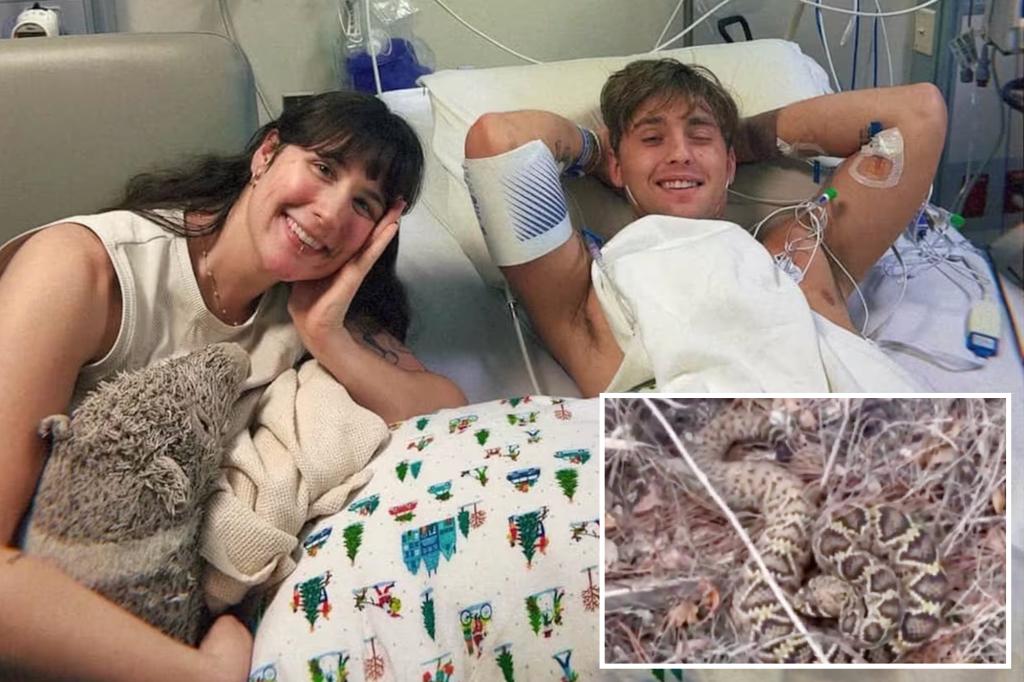David Humplett, a 25-year-old wildlife influencer, experienced a life-threatening encounter with a venomous snake while filming in Florida. His reaction, captured on video, encapsulates a distinctly Gen-Z approach to adversity, blending lighthearted humor with a pragmatic acceptance of the situation. Bitten on the leg by a diamondback rattlesnake, one of the most venomous snakes in Florida, Humplett’s initial response was to document the incident for his followers. Instead of immediate panic, he quipped “Welp, I’m cooked,” and “What a meme dude!” before calmly directing his friends to take pictures of the bite and the snake. His use of gaming slang – “GG” (good game) – further underscores his unusual composure in the face of a potentially fatal situation. This seemingly nonchalant reaction, documented and shared publicly, reflects a generational trend of processing experiences through the lens of social media and internet culture.
The seemingly casual demeanor, however, masked the serious nature of the situation. Diamondback rattlesnake venom is highly toxic, capable of causing severe tissue damage, internal bleeding, and even death. Recognizing the gravity of the bite, Humplett and his friends quickly sought medical attention. He was airlifted to UF Health Shands Hospital, where he received an astounding 88 vials of antivenom to counteract the venom coursing through his body. The severity of the envenomation was evident in the discoloration and swelling of his leg. Humplett’s ordeal highlights the inherent risks associated with wildlife encounters, particularly when approaching potentially dangerous animals for the sake of content creation. His case serves as a reminder of the importance of respecting wildlife and maintaining a safe distance, even for experienced individuals.
While Humplett’s initial reaction may appear flippant, it can be interpreted as a coping mechanism in the face of overwhelming circumstances. His attempt to create a “meme” out of the situation, coupled with his calm instructions to his friends, suggests an effort to maintain control and process the shock of the event. This behavior might also reflect a desensitization to traditional expressions of fear or distress, perhaps influenced by the constant exposure to dramatic content on social media platforms. The immediate documentation of the bite and the subsequent sharing of the experience online aligns with the influencer lifestyle, where personal events, both positive and negative, become content for audience consumption.
The incident also reveals a human element beyond the influencer persona. Humplett’s wife, Emma Rynear, a nurse at the same hospital, provided crucial emotional support during the crisis. Her presence at the hospital, witnessing the helicopter landing with her husband, underscores the personal impact of the event, reminding us that behind the online persona are real individuals with loved ones and personal struggles. Rynear’s description of her internal panic juxtaposed with her outward reassurance to her husband illustrates the emotional toll on those close to the victim. This personal dimension adds depth to the narrative, moving beyond the sensationalism of the snakebite itself.
Despite the pain and trauma of the experience, Humplett exhibited a remarkable lack of animosity towards the snake. His statement, “The snake is just doing what it does… I’m not mad at the snake,” reflects a nuanced understanding of the animal’s behavior and a refusal to demonize it. This perspective, emphasizing the snake’s defensive instincts rather than malicious intent, showcases a level of maturity and respect for wildlife. It also underscores the importance of understanding the behavior and habitats of wild animals to avoid such encounters in the future. This message of coexistence rather than retribution further distinguishes Humplett’s response from typical reactions to such a traumatic event.
Humplett’s experience, from the initial bite to the arduous recovery process, provides a multifaceted look at the intersection of social media, wildlife encounters, and personal resilience. His Gen-Z approach to the situation, documented and disseminated across various platforms, sparked conversations about the role of online platforms in shaping our reactions to real-world events. The incident serves as a cautionary tale about the potential dangers of engaging with wildlife for content creation, while simultaneously highlighting the importance of respecting and understanding the natural world. Ultimately, Humplett’s story transcends the sensational headlines, offering a glimpse into the complex interplay of human behavior, digital culture, and the enduring power of the human spirit in overcoming adversity.

